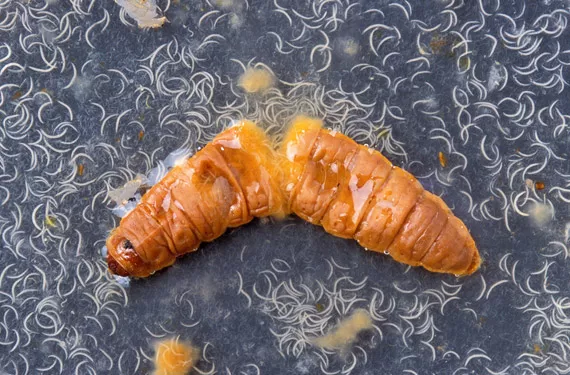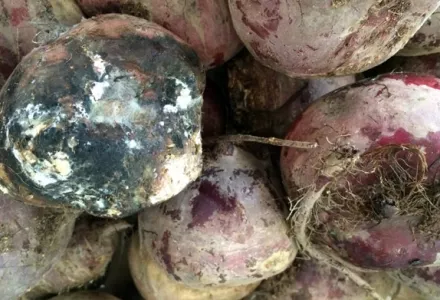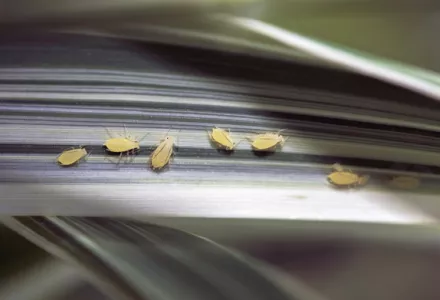There are huge numbers of worm varieties living in soil and their diets vary widely. in this article we are going to focus on those worms that tend to have a positive or negative impact on crops. one such group is the nematodes or roundworms, some of which are phytopathogenic (a parasitic organism that feeds on a plant causing damage), while others act as biological control agents and can be beneficial.
Parasitic varieties are long, rounded and unsegmented, as are nearly all nematodes. They vary in length but are generally between 0.25mm and 2mm. They have a stylet (piercing mouthparts) for feeding which they use to penetrate the host’s cells and suck out the fluids. These nematodes can feed on both internal and external plant parts and some are capable of entering the host plant’s tissue to feed on it.

Visible symptoms of nematode attack
Phytopathogenic nematodes can attack both the parts of the cultivated plant that are above ground (the foliage, branches, etc.) and the parts below ground (the root system). regardless of where the nematode attacks, the symptoms will eventually be seen in the part of the plant that is above ground, since any attack on the roots and stems directly affects the development of leaves and fruit.
Generally speaking, the visible symptoms of a nematode attack are:
- Chlorosis (yellowing)
- Necrosis (dying plant cells)
- Deformations
- The appearance of galls where the parasite attacks
This inevitably leads to a reduction in the plant’s yield.

Natural predators
The damage that nematodes can cause to crops is directly related to the density of the worm population. It is quite normal for soil to host a range of phytopathogenic nematodes but if the population is small enough, the damage will be minimal.
Worm populations are kept in check by natural predators, including other nematodes and certain types of fungi, bacteria and insects. however, extensive cultivation disturbs this natural balance, causing phytopathogenic populations to increase sharply.
Nematode control
The purpose of nematode control is to reduce the population using chemical or biological methods.
The worms are so small that any chemicals used must be capable of penetrating all the soil’s micro pores. as a result, it is common to use formulates in gas form or gas- releasing form.
Biological control agents have also been developed, including certain parasitic bacteria. Beneficial nematodes, which can be used as a biological control, contain symbiotic, toxin-producing bacteria that affect the insects they feed on. for example, the Steinernema feltiae nematode feeds on the larvae of fungus gnats, a common crop plague.
Fungus gnats and soil-based insect larvae
The adult fungus gnat is a small black fly, about 3-4 mm in length. They are commonly seen swarming in greenhouses because they are attracted by the humidity, high temperatures and decomposing organic matter. Crop substrates offer ideal conditions for their larvae, which are white and legless, resembling small worms. They feed on organic matter and the tender parts of plants below the ground, such as roots, as well as the stems.
another group of potentially harmful animals that look very much like soil-dwelling worms are actually soil- based insect larvae. Beetle larvae like Coleoptera and caterpillars like Lepidoptera cause particular damage to crops. a general distinction is made between three groups: white worms (which are whitish in colour, curved in shape and have a fleshy body), wire-worms (which are yellowish with a hard, elongated body), and cutworms (which are lepidopterous larvae and are generally found curled up in the soil). although they generally live underground, these worms can also attack the parts of plants that are above the ground and can even create galleries in logs and branches.



















